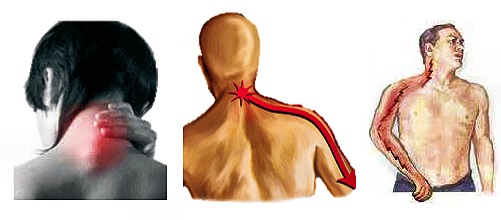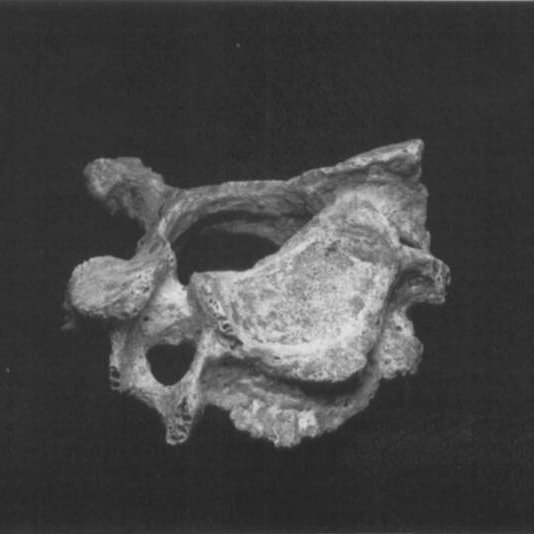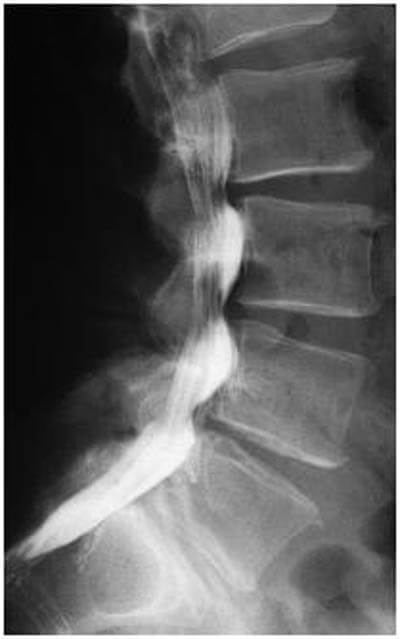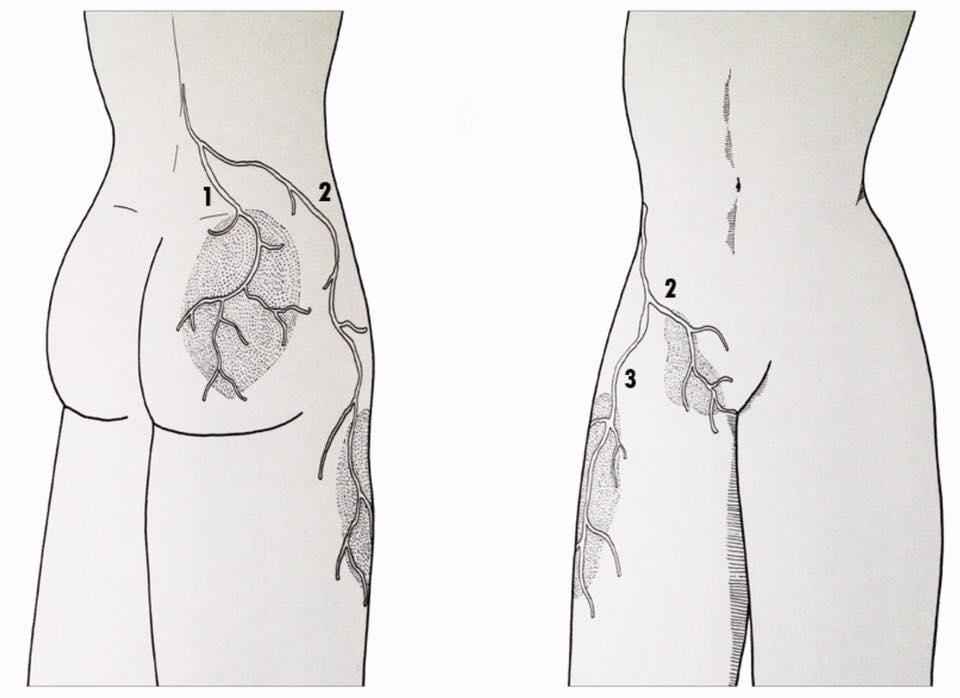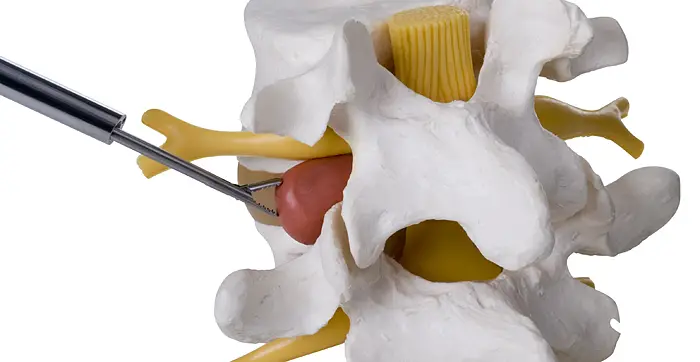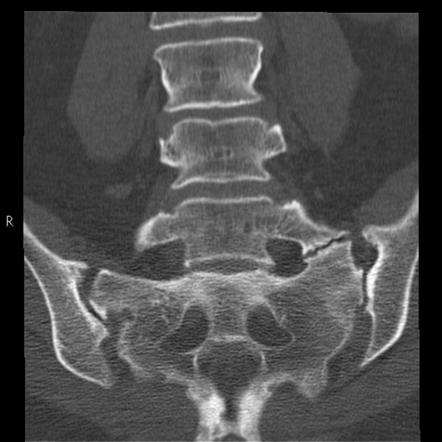Article reviewed and approved by Dr. Ibtissama Boukas, physician specializing in family medicine
La radiculalgia is one of neurological diseases the most frequently encountered. Although it often goes unnoticed, it can lead to serious consequences when the nerve compression is too important. You have been diagnosed with radiculalgia and you want to know more about this disease? We tell you everything in this article: definition, causes, symptoms and treatments.
What is radiculalgia?
The term radiculalgia comes from “radicula” and the word “algia”. These words mean “root” and “pain” respectively. It's nerve root pain. We also talk about root pain.
It is due to a compression of a spinal nerve. The cause of the actual compression is highly variable. The pain is felt along the entire path of the affected nerve. It can extend to the limbs, lower or upper. Depending on the location of the compressed nerve, there are two main forms of radiculalgia: cervical radiculalgia and lumbar radiculalgia.
Cervical radiculalgia
Anatomically, the cervical spine has seven vertebrae. We speak of cervical radiculalgia when the compression is on these vertebrae. Patients who suffer from cervical radiculalgia are divided into two large groups. There are the young and the old. The root concerned by the disorder is identified according to the path of the pain.
For the cervical area, the route can pass through three places:
- shoulders ;
- arms ;
- hands.
Lumbar radiculalgia
Le Lumbar spine has five vertebrae. The lumbar radiculalgia is at these levels. The involved nerve root is also identifiable according to the course of the nerve.
We can then find pain in:
- thighs ;
- legs ;
- Or feet.
What are the causes of radiculalgia?
We can characterize the causes of radiculalgia depending on the age of the patient. For those whose age is less than 50 years, the cause found is mainly the herniated disc. The latter is formed at the level of a intervertebral disc which compresses the nearby nerve root. Each disc is indeed surrounded by an envelope (called fibrous annulus). When the latter breaks, the nucleus comes out and causes a hernia. This is then a mechanical compression of the nerve root.
However, an immune or inflammatory cause may accompany a herniated disc.
For older people, the cause may be:
- thickening of certain ligaments;
- narrowing of intervertebral foramina;
- inflammatory disorders;
- of cancers ;
- metabolic disorders.
Over time, the intervertebral discs age through wear. Thus, osteoarthritis (cervical ou lumbar) is a common cause of radiculalgia in the elderly.
In addition, the growth of a tumor can also be the cause of radicular pain.
Le narrow lumbar canal is also a cause of radiculalgia. It is a narrowing of the channel in which the nerve roots pass at the level of the lumbar region. This retreatment is at the origin of an irritation of the nerve which explains the pains.
How to recognize radiculalgia? Symptoms !
Pain is the master symptom found in the case of radiculalgia. However, other signs may appear. We mainly observe disturbances of sensitivity.
It can be paresthesias which are manifested by:
- numbness of the limbs for example;
- tingling;
- tingling.
In the most advanced cases, the patient may lose the motor skills of his limbs.
Types of most common pain in radiculalgia are a pain sciatica and cruralgia.
La sciatic pain corresponds to the compression of the sciatic nerve. You should know that this nerve has several nerve roots. The most affected root is the one between L4 (fourth vertebrate lumbar) and L5 (fifth lumbar vertebra).
Nerve compression can also affect the root between L5 and S1 (S1: first sacral vertebra). The latter is located just below the back. The route of this sciatic nerve begins on the buttock, crosses the leg and ends at the level of the feet.
About the cruralgia, the compressed nerve is the crural nerve. It is located between L3 (third lumbar vertebra) and L4. One of the crural nerve roots is also located between L4 and L5. If this nerve is affected, the pain begins on the front of the thigh. It then passes over the groin and ends at the knees.
It should be noted that the root pain are amplified by:
- cough ;
- sneezing;
- and thrust forces.
How is radiculalgia diagnosed?
The characteristics of the pain make it possible to orient the diagnosis in favor of radiculalgia. However, it is mainly radiological examinations that confirm this. Thus, the doctor will prescribe you a scanner or an IRM (Magnetic Resonance Imaging). These examinations will focus on the painful areas. Apart from neuroimaging, doctors can also use other so-called electrophysiological (EMG) examinations.
If these examinations do not reveal the cause of the radicular pain, a biological analysis may be carried out. This is the cytological and bacteriological analysis of spinal fluid. It is the fluid inside the spine. This will include looking for signs of infection or inflammation.
A blood sugar level may also be requested to check for diabetes.
What is the treatment for this disease?
There are two types of anti-inflammatories: steroidal and non-steroidal. The latter are the most effective in the context of this nervous disorder, but their long-term use carries health risks. Ains, it is often used for a short time, and in combination with other drugs. Steroidal anti-inflammatory drugs are used as a second line.
Here is a small list of medications that are usually prescribed by the doctor to relieve root pain:
- paracetamol: often insufficient to relieve pain;
- codeine: highest grade analgesic;
- tramadol: higher level painkiller;
- morphine: analgesic reserved for very intense pain;
- ketoprofen: nonsteroidal anti-inflammatory drug (NSAID);
- diclofenac: NSAIDs;
- naproxen: NSAID.
Antiepileptics are also due to their direct action on the affected nerve fibers. Moreover, they can be infiltrated directly on the affected area.
La physiotherapy is also effective against radiculalgia. The main purpose of the sessions is to relieve nervous tension in order to reduce radicular pain.
You can reduce the discomfort caused by radiculalgia through relaxation activities such as swimming, yoga, meditation, etc.
As a last resort, it is possible to proceed with the surgery to treat radicular pain. The operation is carefully discussed depending on the cause of the disorder. The principle is relatively simple: remove the compression at the level of the nerve root. In general, surgery is only resorted to when the symptoms really interfere with the patient's daily life or when they threaten his vital functions (difficulty in evacuating urine and stools.)
Sources
- https://www.passeportsante.net/fr/Maux/Problemes/Fiche.aspx?doc=radiculalgie-causes-symptome-traitement
- https://www.douleurs-musculaires.ooreka.fr/astuce/voir/550355/radiculalgie
- https://medicalforum.ch/fr/
- https://www.institut-parisien-du-dos.fr/fr/les-pathologies/la-pathologie-cervicale/la-nevralgie-cervico-brachiale
- https://primary-hospital-care.ch/fr/article/doi/phc-f.2021.10288



